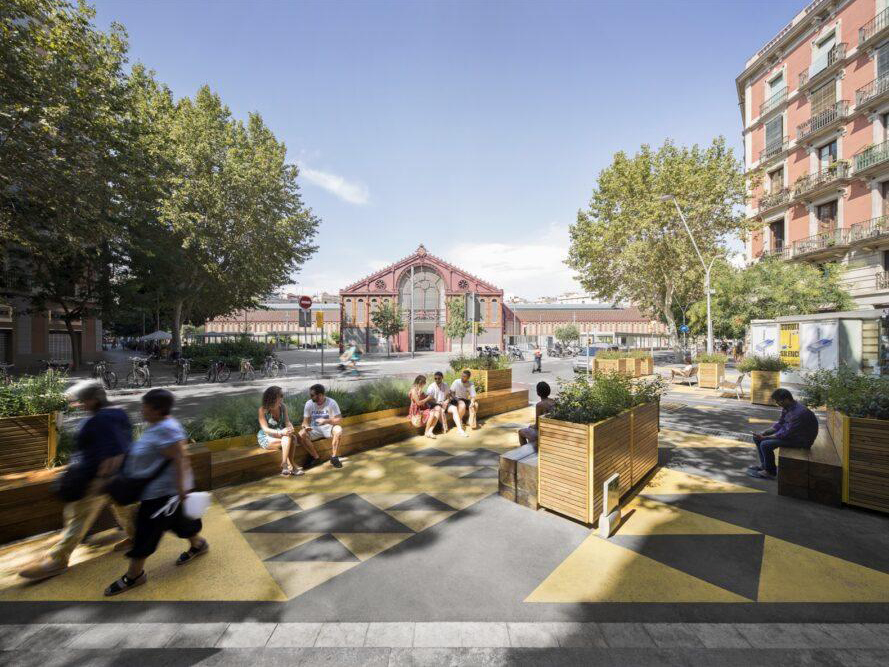The city of Barcelona is launching a new phase in the exemplary urban Superblock (Superilles) project, to be informed by an Advisory Committee of experts and professionals with recognized prestige in the field of urban policy, including IAAC’s Co-Founder, Director of Valldaura Labs and Co-Director of the MAEBB, Vicente Guallart.

Image Credit: Ajuntament de Barcelona
Prototypes involving varying degrees of adaptation of the urban infrastructures – from simple surface markings to the installation of pavement, plantings and furniture – made between 2015 and 2020 in the districts of Poblenou, Horta, Hostafrancs and Sant Antoni have evidenced the social, cultural, environmental and economic value of the underlying Superblock concept; basically, the grouping of multiple city blocks into zones within which all interior streets are exclusively reserved for pedestrians, thereby fostering a vibrant public realm, with vehicular traffic relegated to the perimeter.
But the Superblock project has much greater aspirations. As a priority action in Barcelona’s 2020 Climate Emergency Declaration, the program anticipates a dramatic shift in scale and pace, increasing the number of actions, expanding its territorial scope and reimagining its structural character. In fact, the concept of Superblocks could be understood as a model with the capacity to transform the entire city through sequential transformations of set of streets throughout all districts.

Image Credit: Leku Studio
The expanded Superblock program will define a new map of Barcelona, ??identifying the spaces and streets that must become greener and prioritize pedestrians. In other words, a map of new green axes, representing a new way of visualizing the city more thoroughly integrates nature. The first phase will focus on the Ildefons Cerdà’s Eixample, reimagining this iconic fabric of the XIX-century to suit contemporary requirements. Whereas major aspects of the original layout were optimized for motor traffic, the revision will optimize space for vegetation and gathering at the chamfered intersections, connected by verdant, walkable corridors. In short, the aim is for the Eixample to emerge as a healthier, more liveable urban system, offering an improved quality of life to its public, while securing the ecosystem services and biodiversity underpinning their wellbeing.
